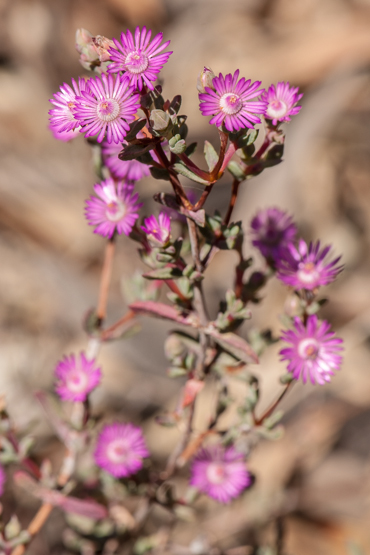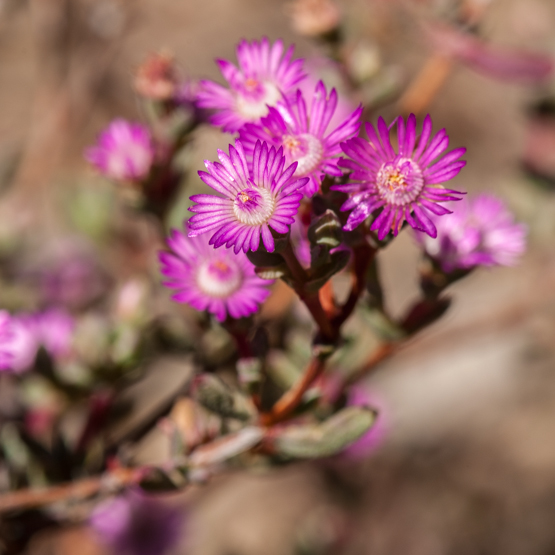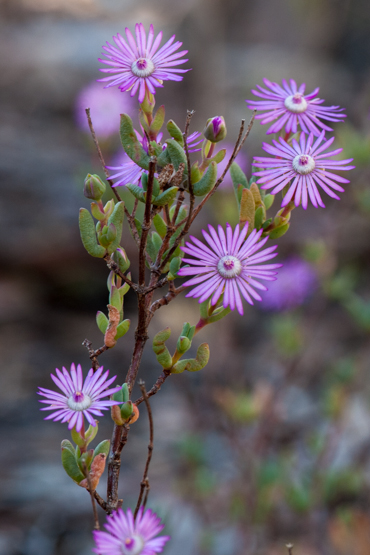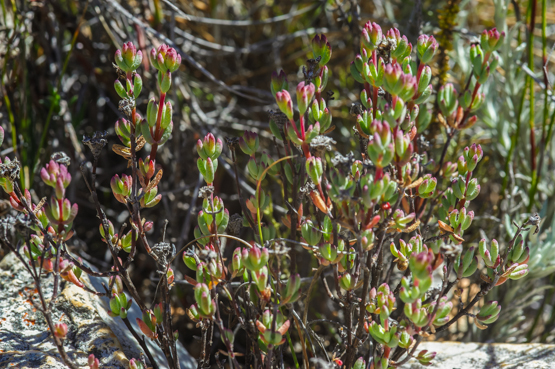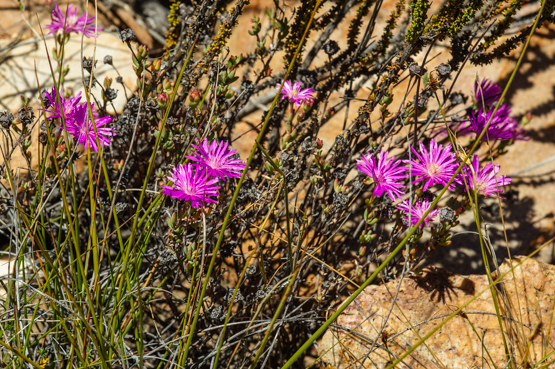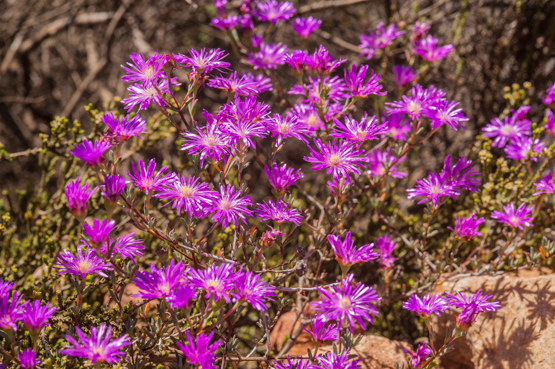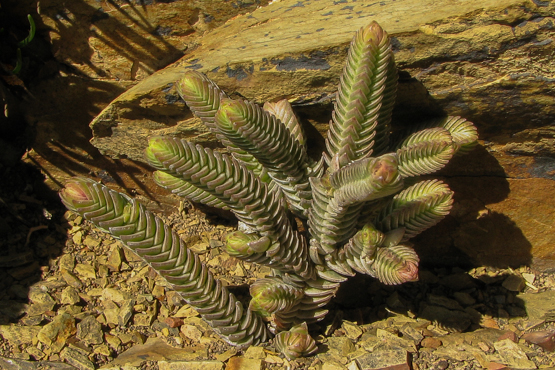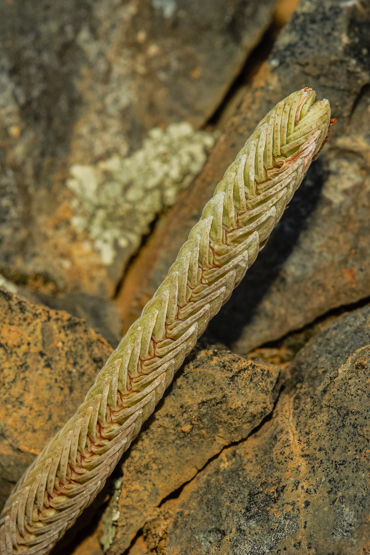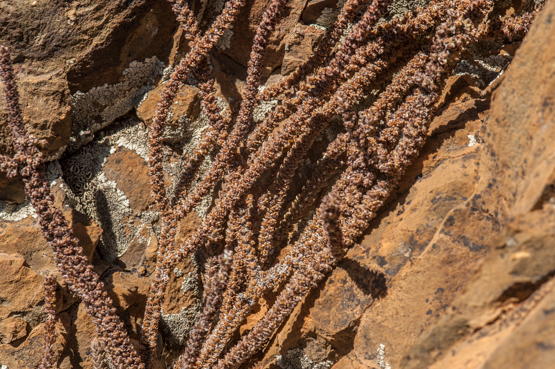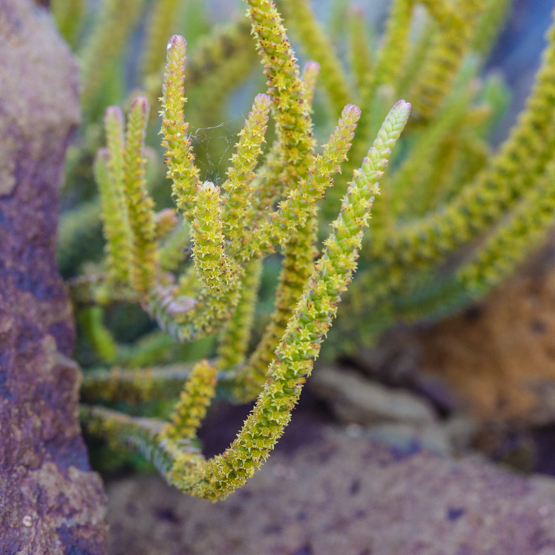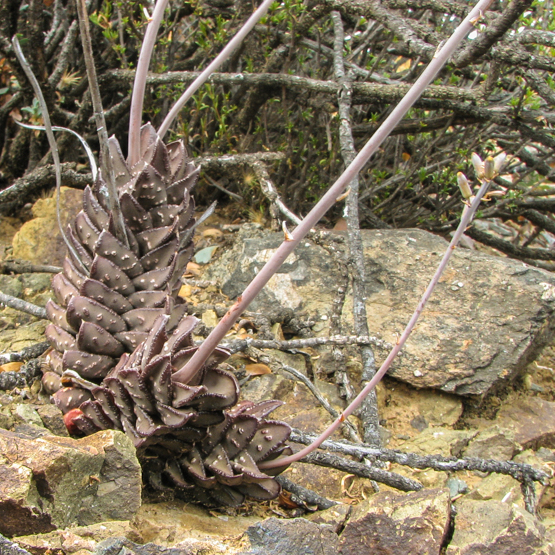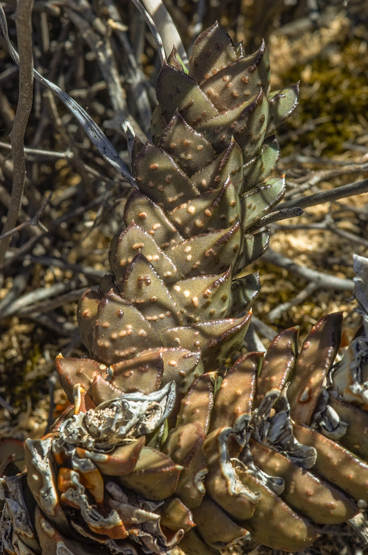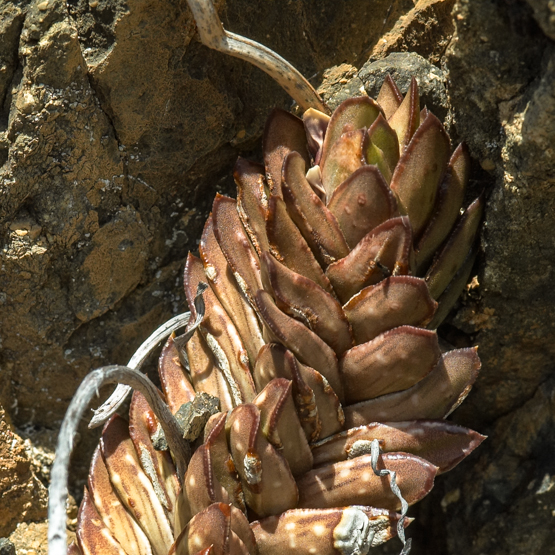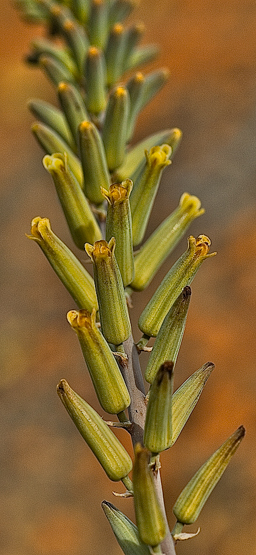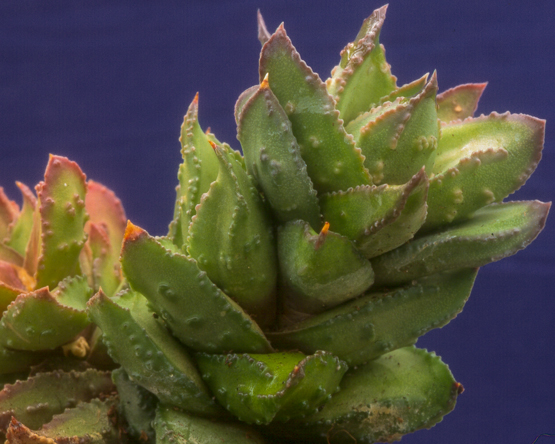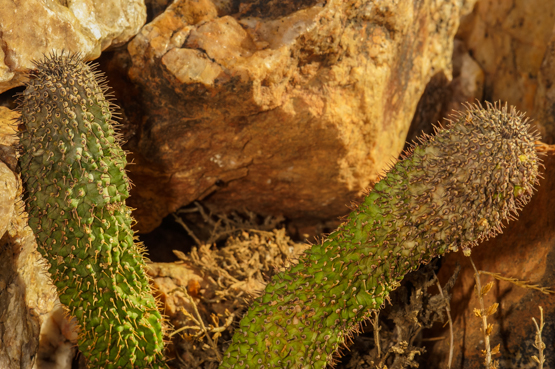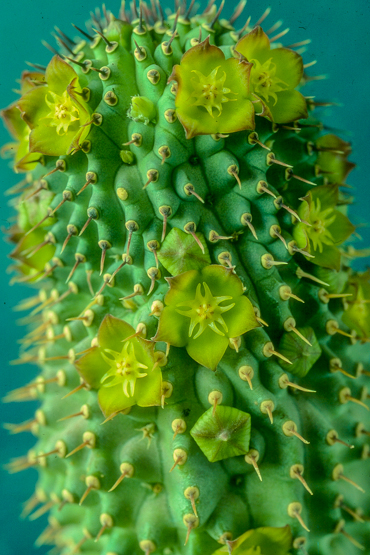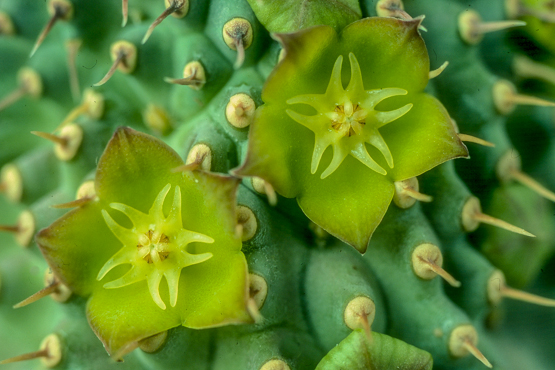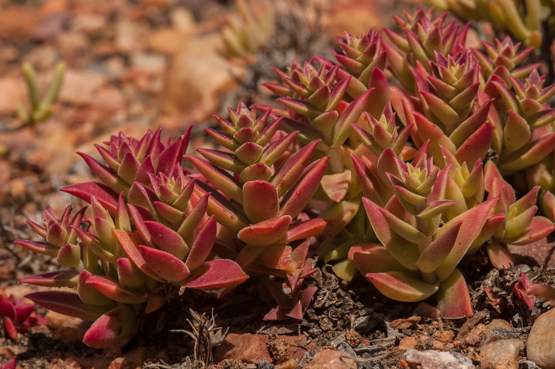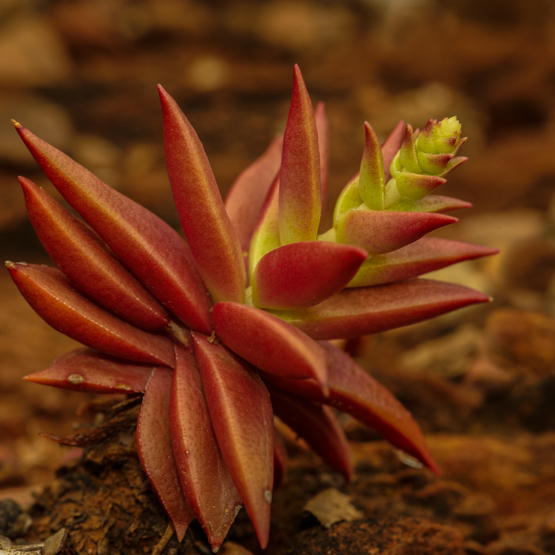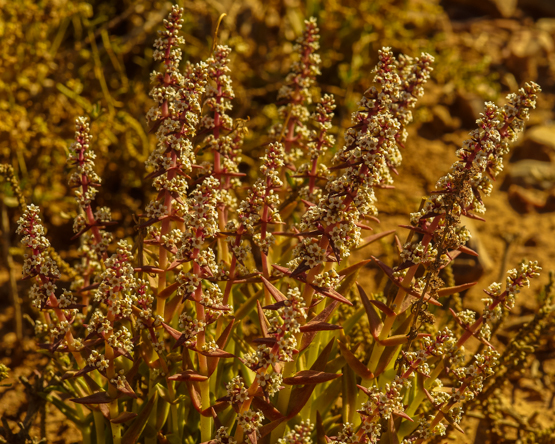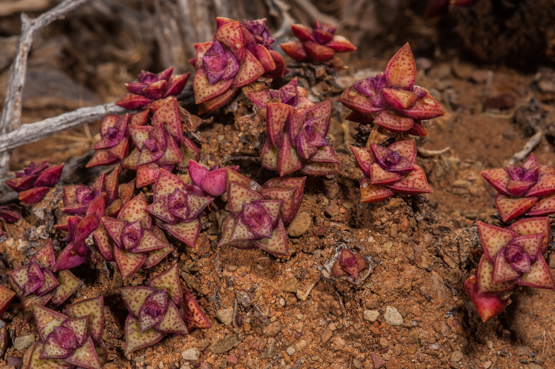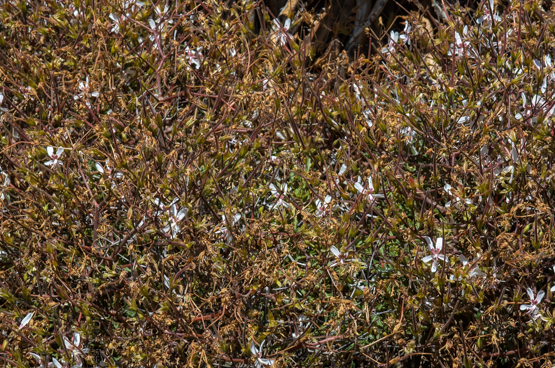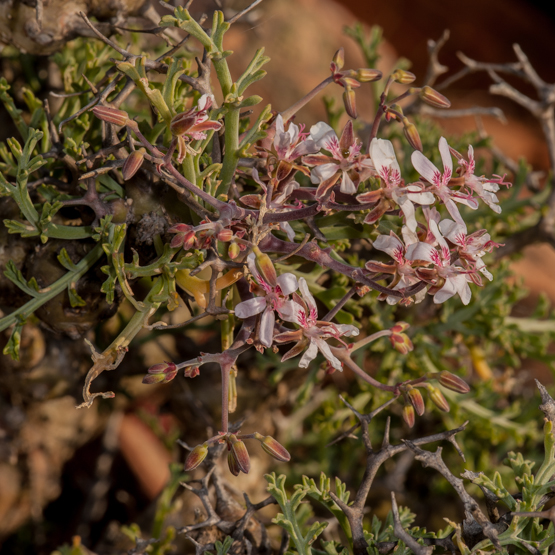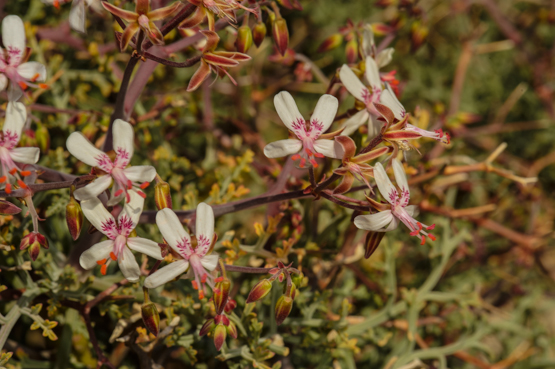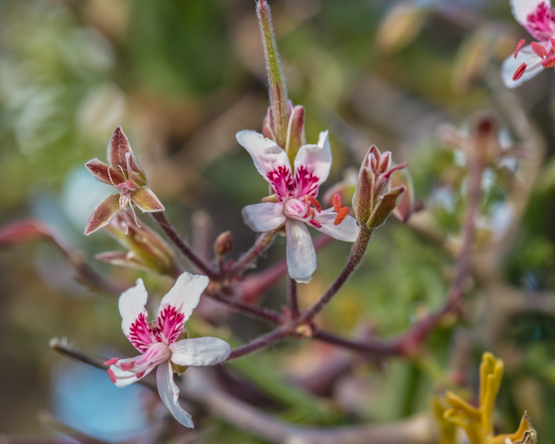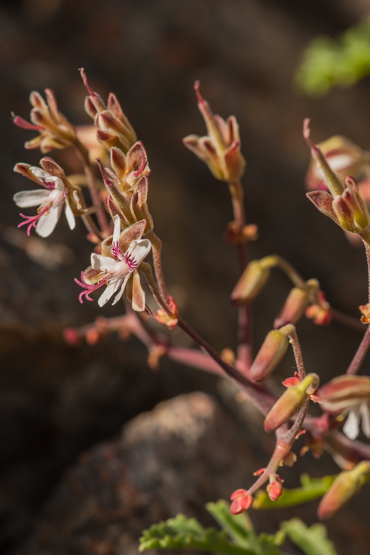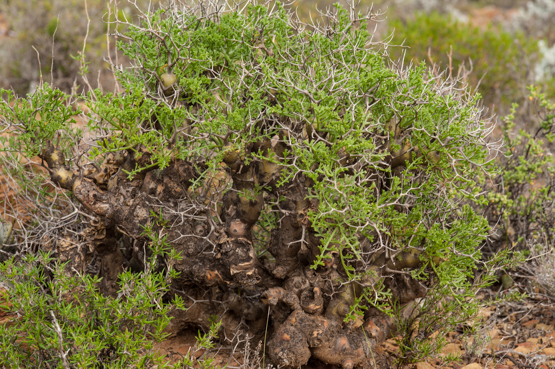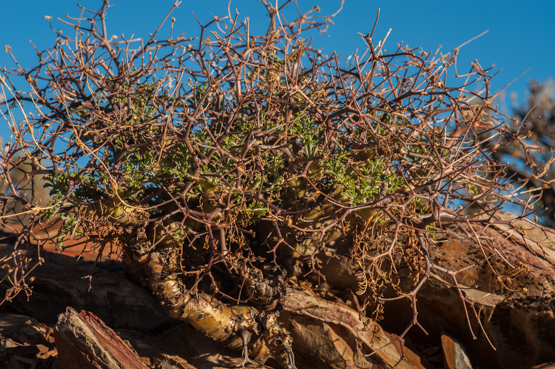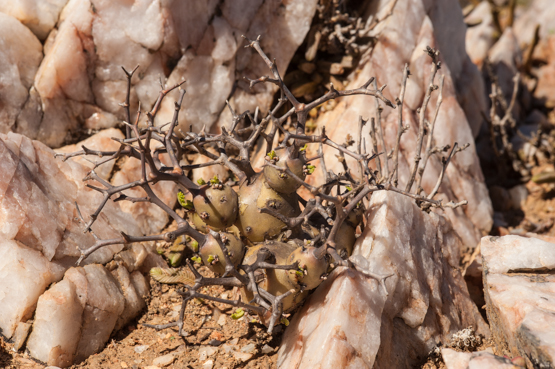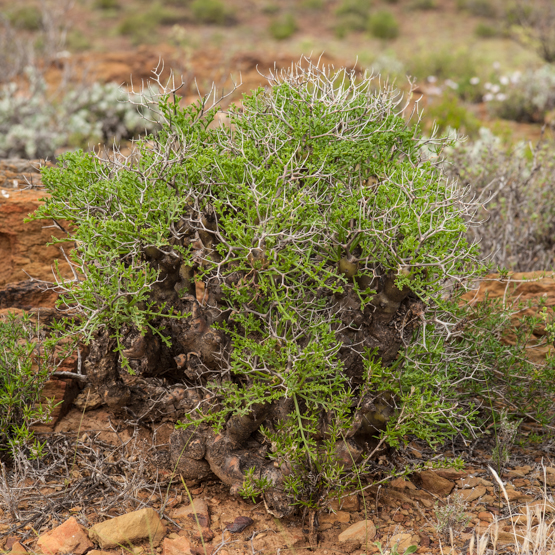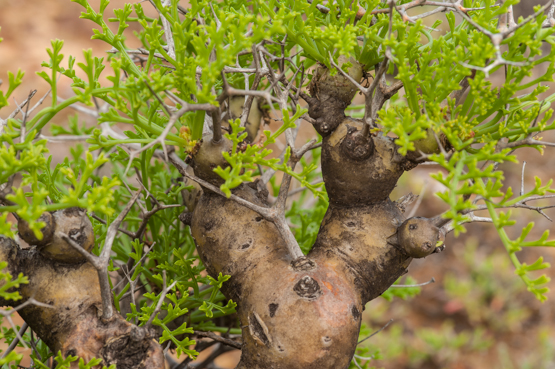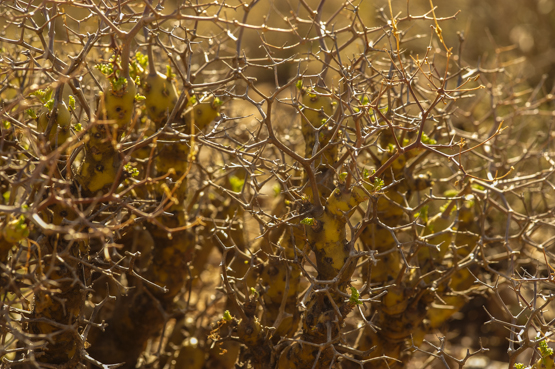These pictures were taken last Monday on the outskirts of Montagu and represent the plants that used to be called Lampranthus montaguensis.
The last one shows a plant growing in shade, thereby giving a very different, much more subdued impression.
Tag: South African succulents
Ruschiella argentea (1)
In 2005, Cornelia Klak set up the genus Ruschiella to accommodate a couple of species of Lampranthus.
Up to then, the subject of this post was known as either L. argenteus, L. montaguensis or L. nardouwensis. The plants are shrublets up to about 25 cm tall, with greyish green leaves 17-20 mm long. The flowers are 19-23 cm across, with white to pinkish purple petals which have a more or less distinct mid stripe.
According to literature, the species occurs from Clanwilliam to Paarl and Montagu. The pictures in this post show that plants grow much further east, around Calitzdorp, but probably also belong to this species.
Crassula muscosa var. muscosa (2)
Crassula muscosa var. muscosa (1)
The great Linnaeus himself described this species way back in 1760. The adjective muscosus means moss-like, which is certainly an apt name for some of the many guises in which this species comes.
In var. muscosa the branches are usually 20-40 cm long (sometimes up to 80 cm) and upright, creeping or scrambling. An old synonym for it is Crassula lycopodioides, referring to Lycopodium or clubmoss. This variety is found from southern Namibia to South Africa’s South coast, but is especially widespread in Namaqualand and the Great Karoo and neighbouring areas. Even within this one variety (there are four in total) one comes across a great number of different forms. In the wild the leaves are generally greyish green to brown; in cultivation one also finds other colours.
The plants often grow in very dry spots. The same thin and densely leaved branches that make them look so delicate, seem to be rather effective in condensing dew and fog and channeling this moisture to their roots.
Astroloba bullulata
Most of the time this beautiful and distinctive species is not easy to find, not only because it is rather uncommon, but also because it prefers to grow in the shelter of shrubs. It branches only reluctantly and may reach a height of 30 cm.
The attractive flowers appear from November to June.
The main distribution area is from Sutherland to Ceres and Laingsburg. A locality near Bonnievale and one near Prince Albert are also mentioned in literature.
The last picture shows a plant in cultivation.
Hoodia (Trichocaulon) flava
Although these plants may reach a height of 50 cm, they are usually much smaller.
They occur in a few places in southern Namibia and around Pofaddder in Bushmanland, but the majority of them are found from Calvinia to Carnavon in the central Great Karoo and southwards as far as Prince Albert and Rietbron. They often grow inside bushes, especially those of spiny Ruschias.
The plants in habitat were photographed south of Pofadder, the other ones in cultivation.
Crassula capitella subsp. thyrsiflora
H. R. Toelken in his “Revision of the genus Crassula in southern Africa” calls this the most complex subspecies found in C. capitella, which in turn he refers to as a complex species.
The subspecies is widely distributed in the Eastern and Western Cape provinces, Limpopo and southeastern Namibia.
The white or pink flowers are borne in groups along an elongated inflorescence (up to 40 cm tall) and appear between November and March.
In cultivation one normally sees the form shown in the first four pictures.
The photo below shows plants as they are found in and around the Anysberg Nature reserve. They have beautifully marked leaves which are much shorter then one would expect in subsp. thyrsiflora.
As the reserve is on the western border of the distribution area of subsp. capitella, they may belong there, but I will have to see the flowers before being able to properly identify them.
Pelargonium crithmifolium (3)
Pelargonium crithmifolium (2)
In the preceding post I mentioned the persisting inflorescences that are so characteristic of this species. When you look back at that post you will notice that even young plants produce them.
One cannot help but wonder what purpose these outgrowths serve apart from the obvious one: supporting the flowers and fruits (which could be done with a far less complicated and heavy structure). We have to bear in mind that these plants live in difficult circumstances and cannot afford unnecessary extravagances. In other words, there must be a proper return on investment and the best return would be one that helps the plants to survive.
To my mind, the persisting inflorescence has three functions:
— It keeps browsing predators away.
— It helps shade the plant and thereby lower the temperature.
— The intricate structure of branches diminishes the speed of the usually hot and desiccating wind.
It is interesting that these functions have their strongest influence at the place where they are most helpful: the growing tips of the stems, with their soft and tender young leaves.
More pictures to follow.
Pelargonium crithmifolium (1)
With its thick stems and a height of up to 1 meter, this species is one of the giants among the succulent Pelargoniums. Only P. carnosum is occasionally taller (up to 1.2 m). The species is characterized by its large, much branched inflorescences which become hard and spine-like and will persist for at least a year. The flowers appear from March to November.
The plants occur sporadically from southern Namibia to the western Great Karoo and the Little Karoo on dry, hot flats and slopes, often in crevices of rocky outcrops.


